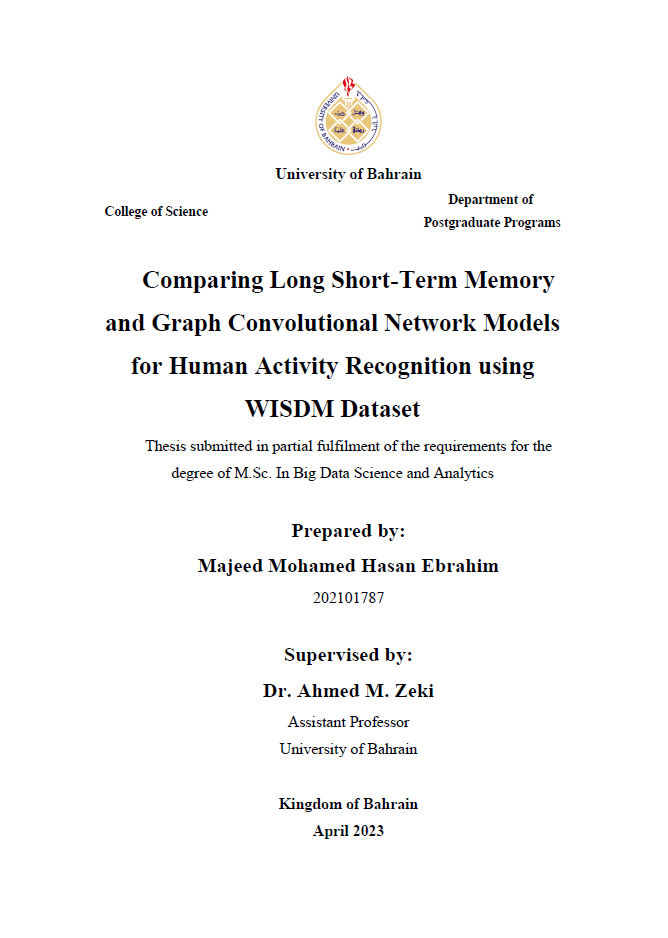وثيقة
المعرف
https://digitalrepository.uob.edu.bh/id/bbff4ac4-b955-4b61-aba0-9524ef6d2284
Comparing Long Short-Term Memory and Graph Convolutional Network Models for Human Activity Recognition using WISDM Dataset
وكيل مرتبط
Zeki, Ahmed M, مشرف الرسالة العلمية
تاريخ النشر
2023
اللغة
إنجليزي
مدى
[1]، 14، 98، [5] pages
الموضوع
مكان المؤسسة
Sakhir, Bahrain
نوع الرسالة الجامعية
Thesis (Master)
الجهه المانحه
"University of Bahrain
الملخص الإنجليزي
Abstract
The development of technology in computer hardware has made observing and
analyzing daily performed activities an easy task. Therefore, human activity recognition
systems have benefited from the embedded sensors in smart devices in several fields,
such as healthcare, security, and fitness. Furthermore, these sensors can generate
sequenced data with temporal and spatial relationships. Therefore, Artificial
Intelligence techniques, such as machine learning and deep learning, have been utilized
for data processing and activity classification. While traditional machine learning
methods have performed well, they require manual feature extraction from the raw data.
Meanwhile, deep learning methods can extract the required features respecting
spatial and temporal dependencies. Among those methods, The Long Short-Term
Memory (LSTM) method is proven efficient in dealing with time-series data. In
addition, the Graph Convolutional Network (GCN) has the ability to extract
spatiotemporal relations using the graph data structure. However, as per author
knowledge, the previous studies have yet to compare the performance of both methods,
so this research aims to compare both methods using the WISDM dataset. The dataset
contains data from accelerometers and gyroscope sensors embedded in smartphones
and smartwatches for 18 performed activities.
For each smart device, the data of two sensors have been combined to form two
sub-datasets which are the preprocessed and prepared datasets for feeding models using
the overlapped sliding windows. Hence, both methods have been applied to the
resulting sub-datasets. As a result, for the smartphone sub-dataset, the GCN model
outperformed the LSTM model by around 4%, scoring 94.4% for accuracy and F1-
score. In addition, the GCN model performed better than some previous LSTM models
considering a subset of activities. On the other hand, the smartwatch sub-dataset gave
a slight advantage to the GCN model over the LSTM model by nearly 1%, as it scored
90.4% for accuracy and F1-score. However, the GCN method can be considered a rival
to the LSTM method in such data type, which should be applied to other datasets in
future works for generalization.
المجموعة
قالب العنصر
أطروحات


